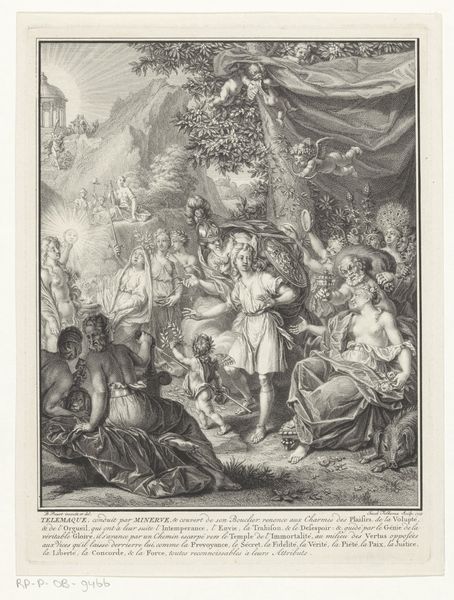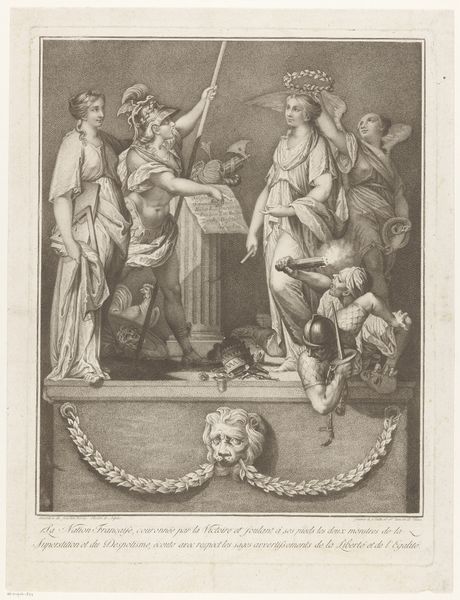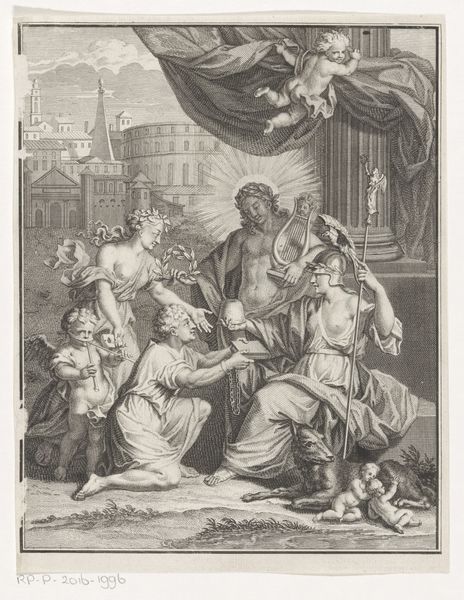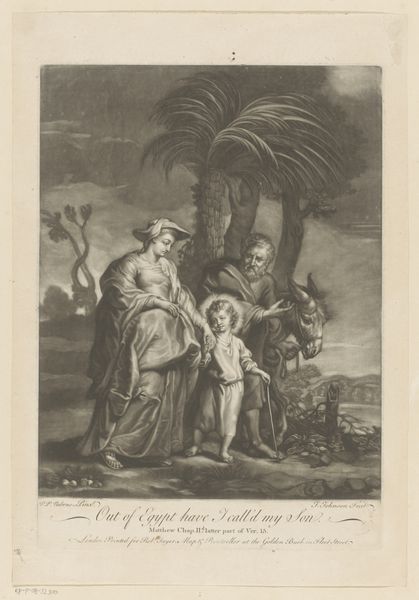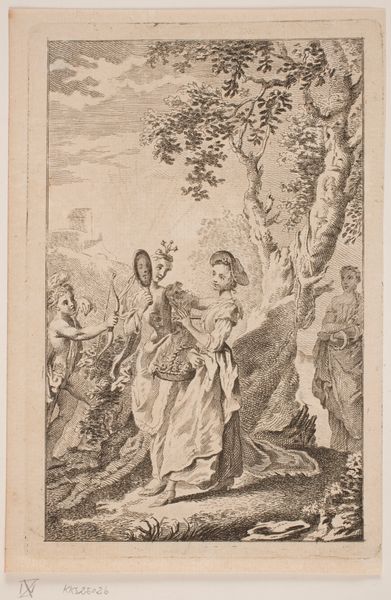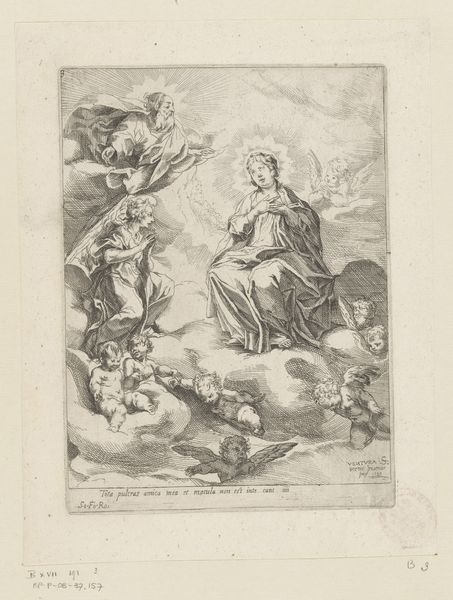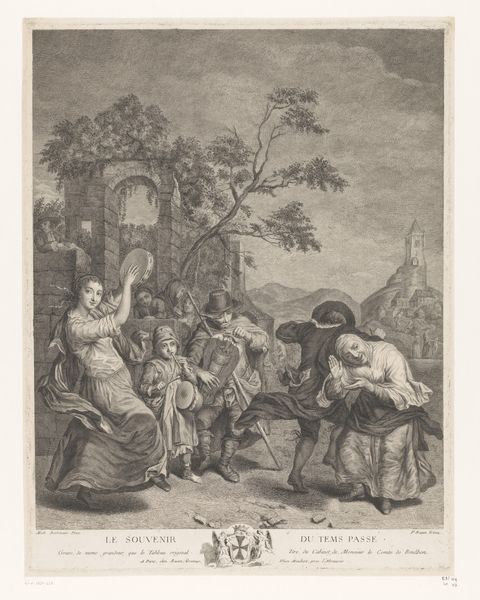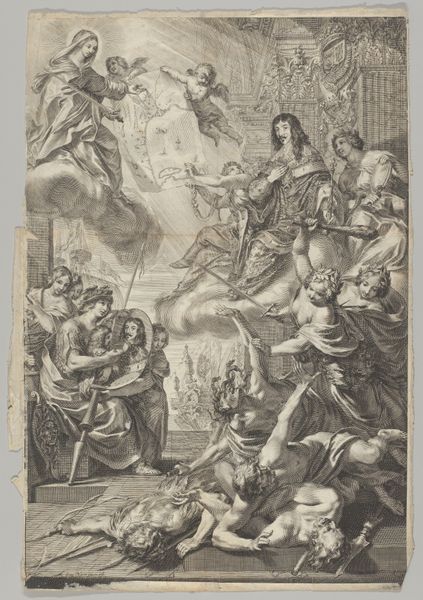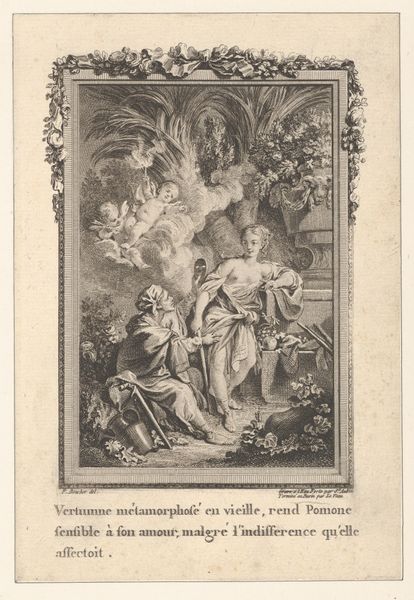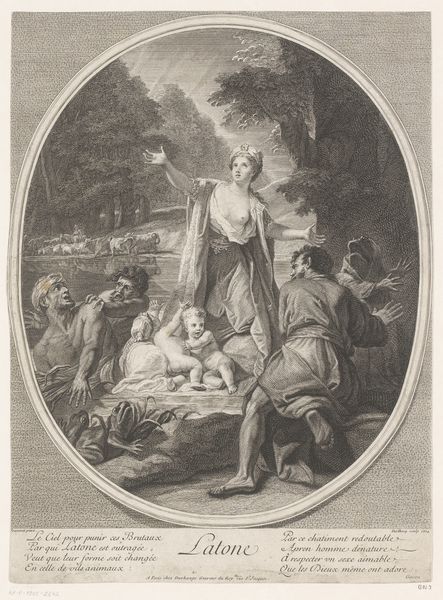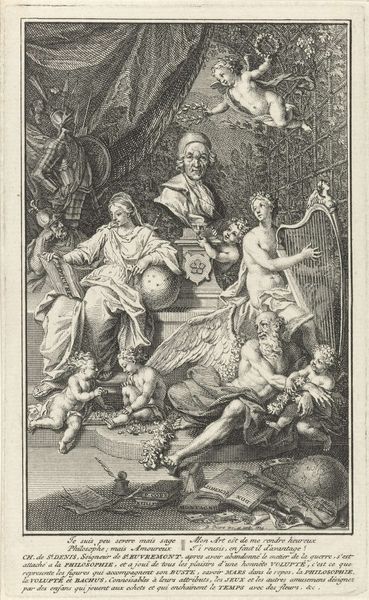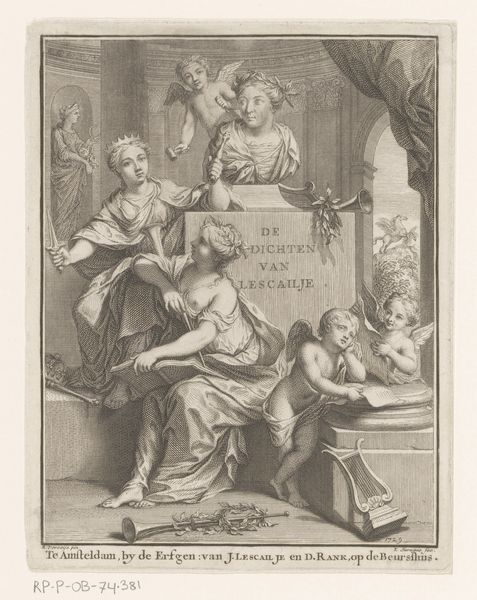
Portrait of the future Holy Roman Emperor Leopold II as the Archduke of Austria and Grand Duke of Tuscany, set within a roundel upper left, allegorical figures representing the arts and sciences below 1755 - 1765
0:00
0:00
drawing, engraving
#
portrait
#
drawing
#
allegory
#
baroque
#
men
#
history-painting
#
engraving
Dimensions: Sheet (Trimmed): 9 3/16 × 6 9/16 in. (23.4 × 16.7 cm)
Copyright: Public Domain
Editor: So, here we have Carlo Faucci's engraving, made sometime between 1755 and 1765, titled "Portrait of the future Holy Roman Emperor Leopold II...". It's packed with allegorical figures. The level of detail achieved purely through line work is quite amazing! I wonder about its purpose though. What do you see in this piece? Curator: Immediately, I see an object deeply embedded in systems of patronage. Look at the incredibly precise, reproductive labour required for this engraving. Consider the patronage network that enabled Faucci to produce it and circulate it, reproducing not just Leopold's image but the ideology of enlightened monarchy. Who would buy this print and why? How would it have functioned within specific material economies? Editor: That’s interesting. So, instead of just thinking about it as a piece of art, we should also think about it as a manufactured object operating within economic structures? Curator: Precisely. Notice how the medium, engraving, lends itself to mass production and dissemination. The availability and relative affordability of prints meant they could circulate among a broader segment of the population than painted portraits, performing a particular kind of social work in reinforcing the sitter's image. Editor: That’s a perspective I hadn’t fully considered before. I was focused on the image itself and the figures represented. Curator: The allegorical figures also represent commodities -- intellectual and creative outputs that reflect power, wealth and access for its commissioners and producers. Each mark has the capacity to reveal complex historical conditions through a focus on the making of the object itself. What kind of cultural work can be accomplished by this distribution and repetition of royal imagery through a medium like engraving? Editor: I see what you mean. This isn't just a portrait; it’s a meticulously crafted artifact meant to actively participate in Leopold's construction of power. Thinking about production really opens up another layer to appreciate it on. Thanks for the insight! Curator: Absolutely! Considering the materiality and context of creation encourages us to see artworks as active agents in society, rather than simply passive reflections.
Comments
No comments
Be the first to comment and join the conversation on the ultimate creative platform.
